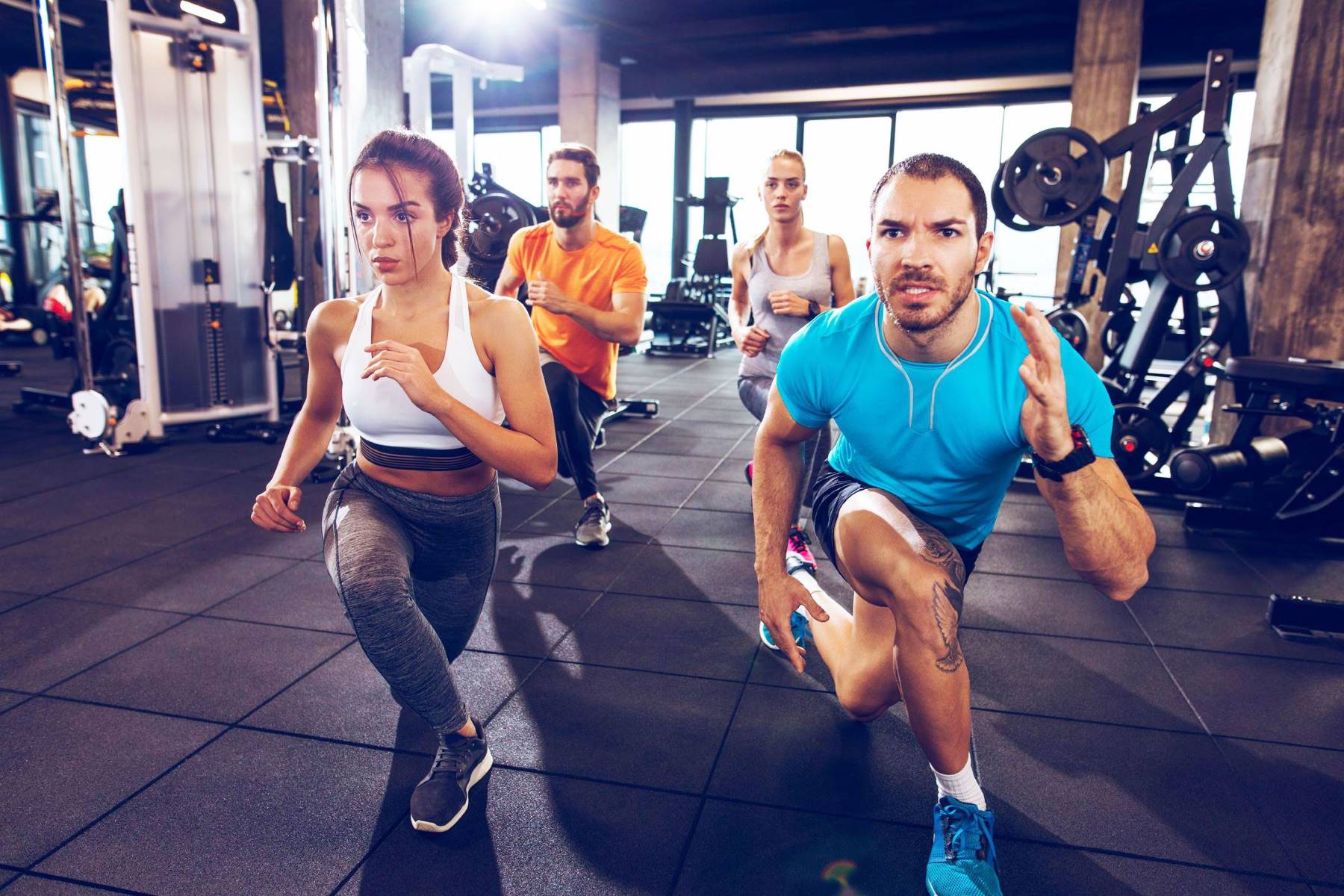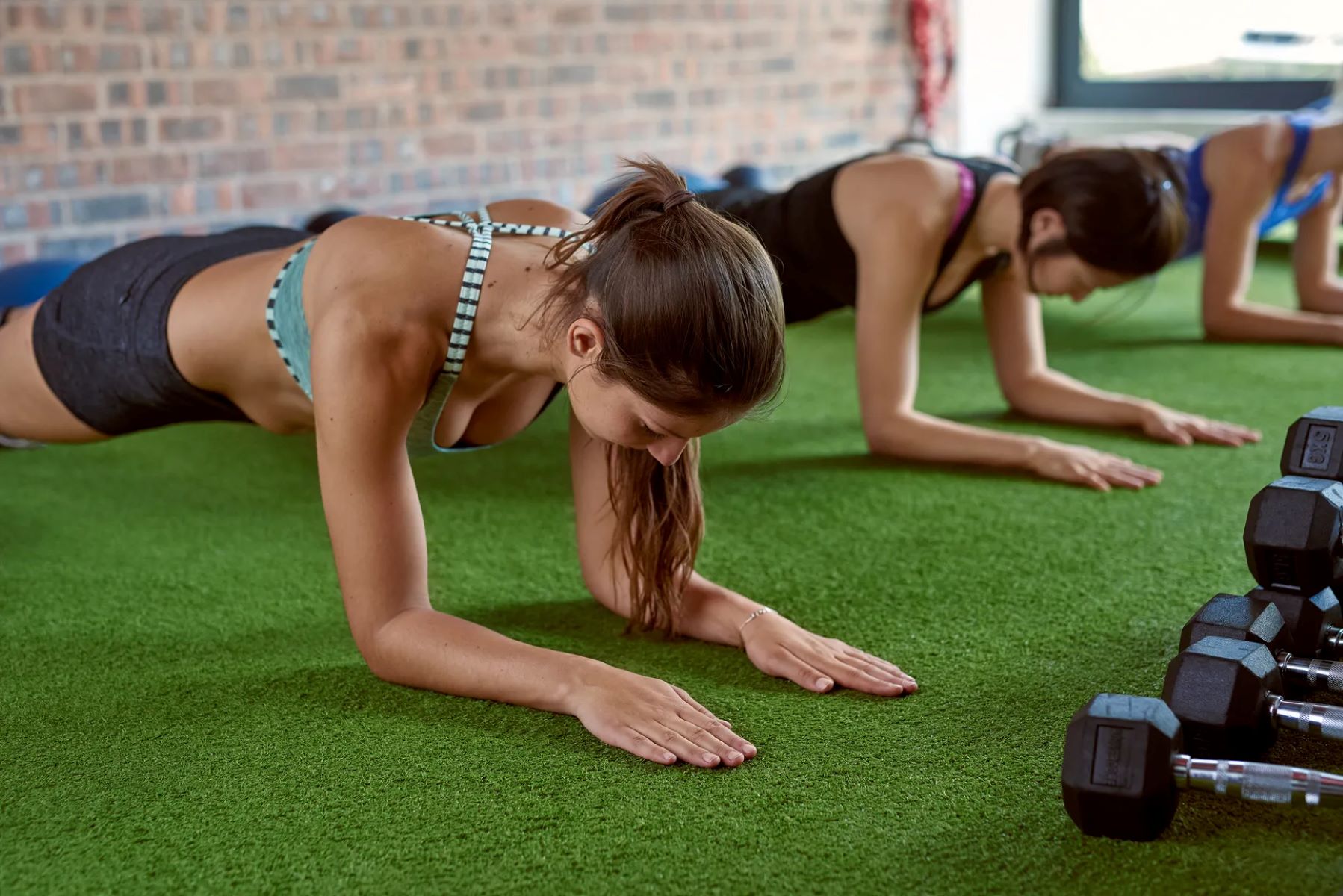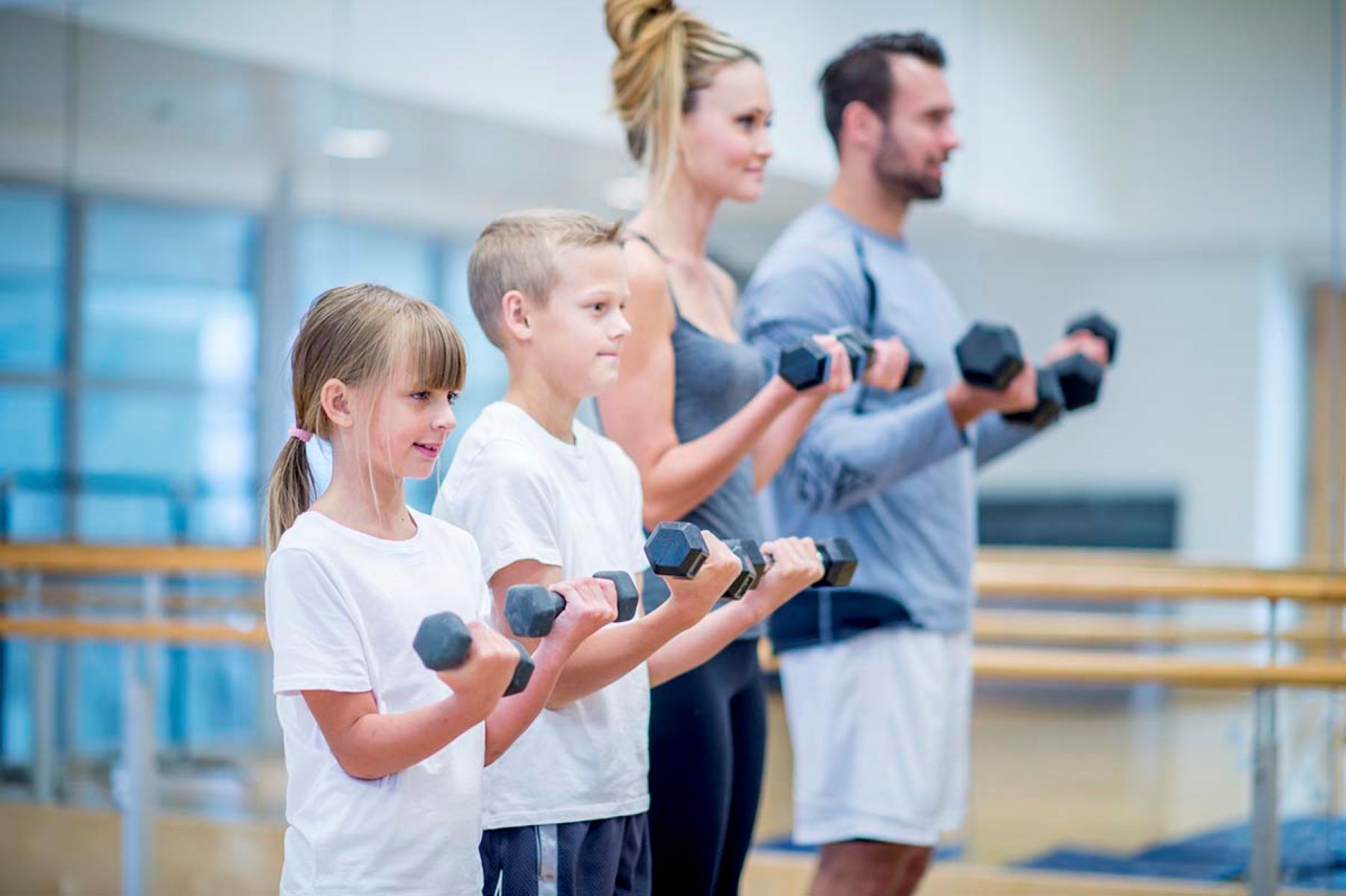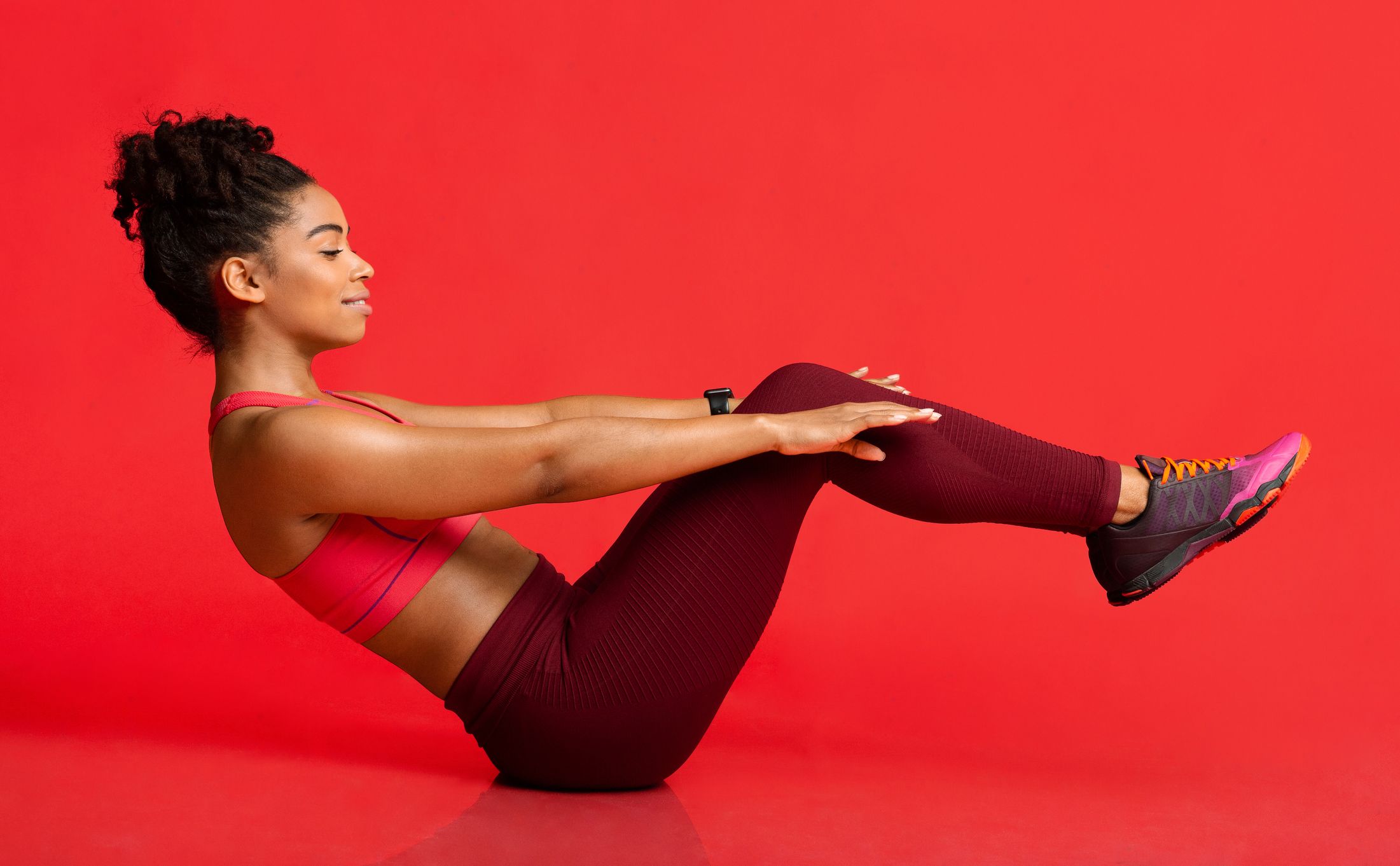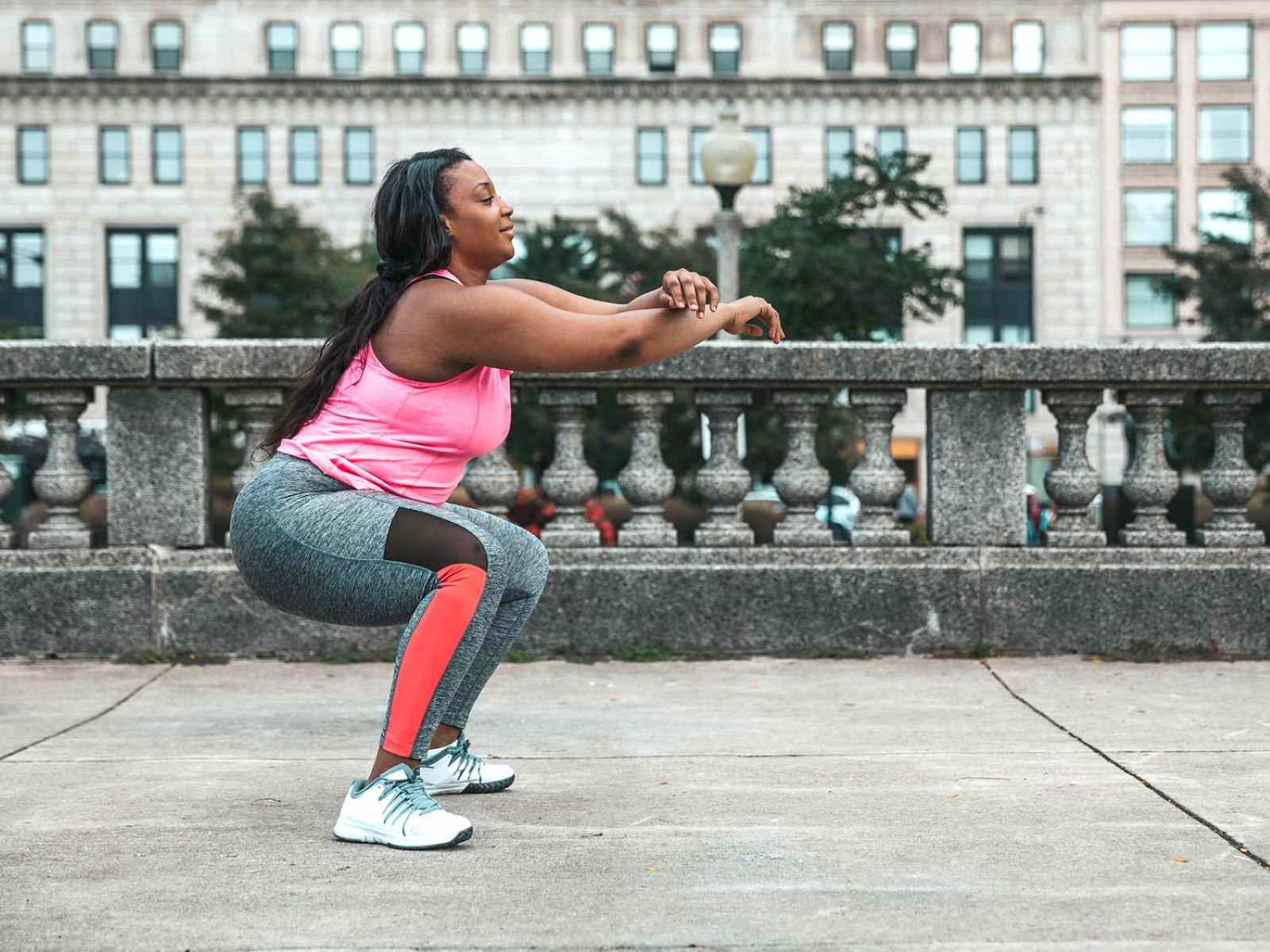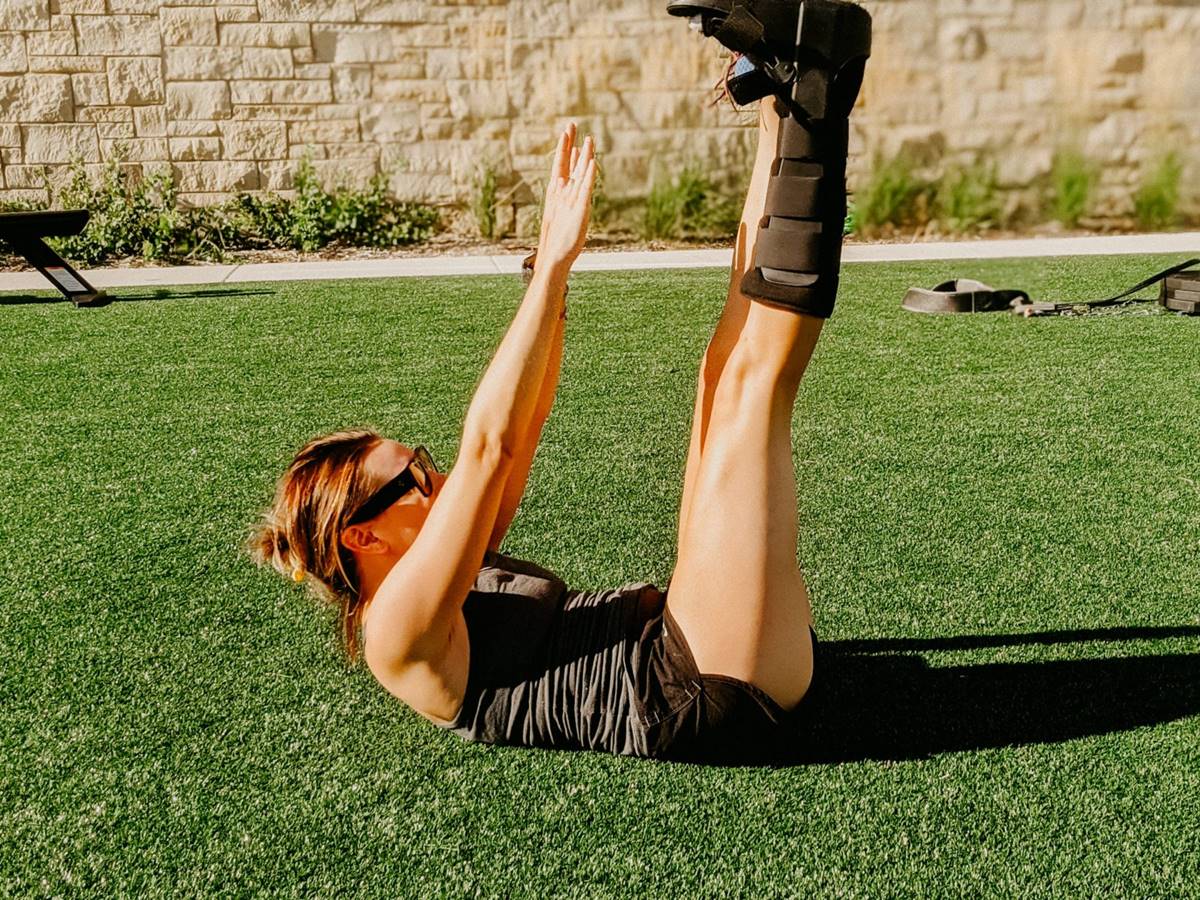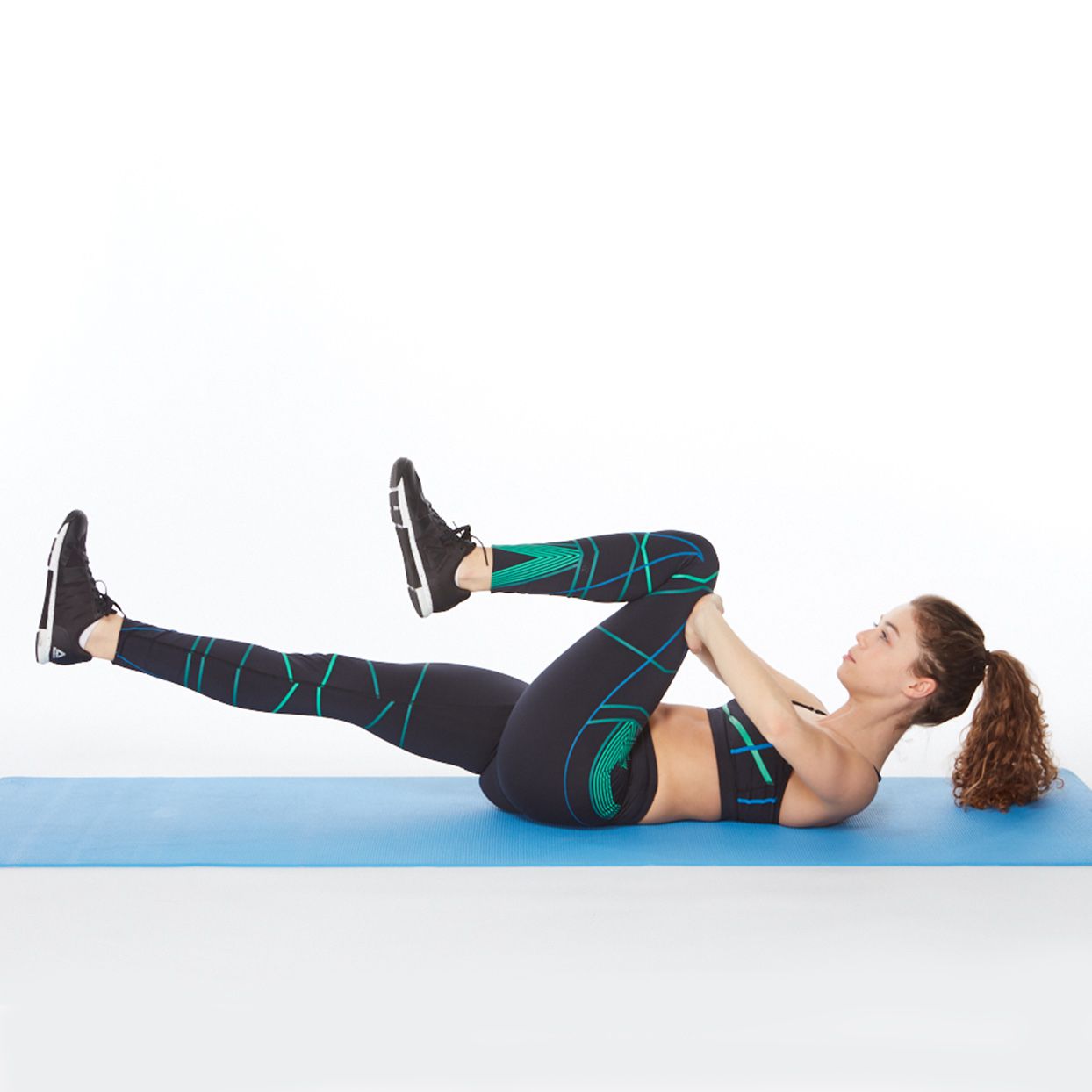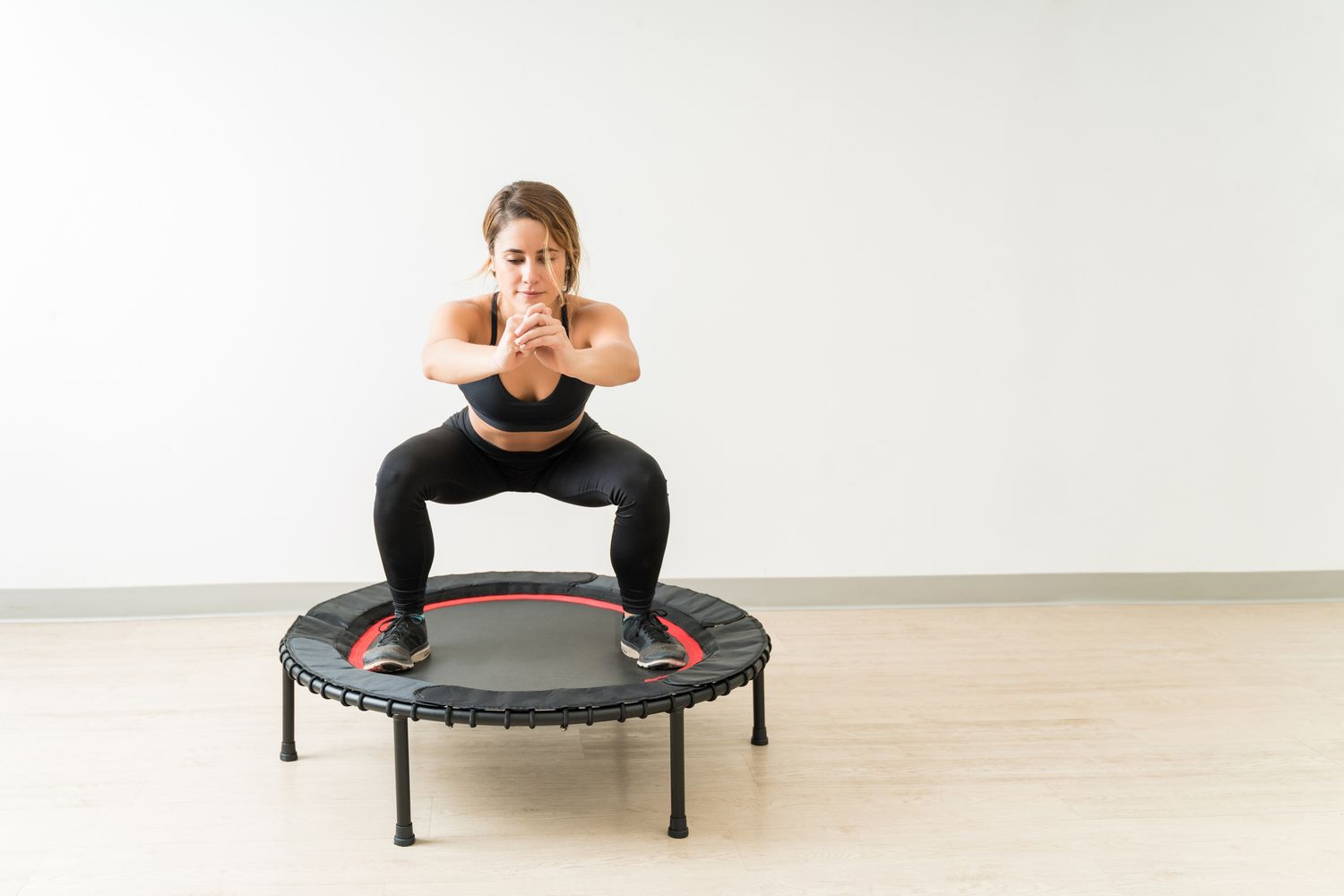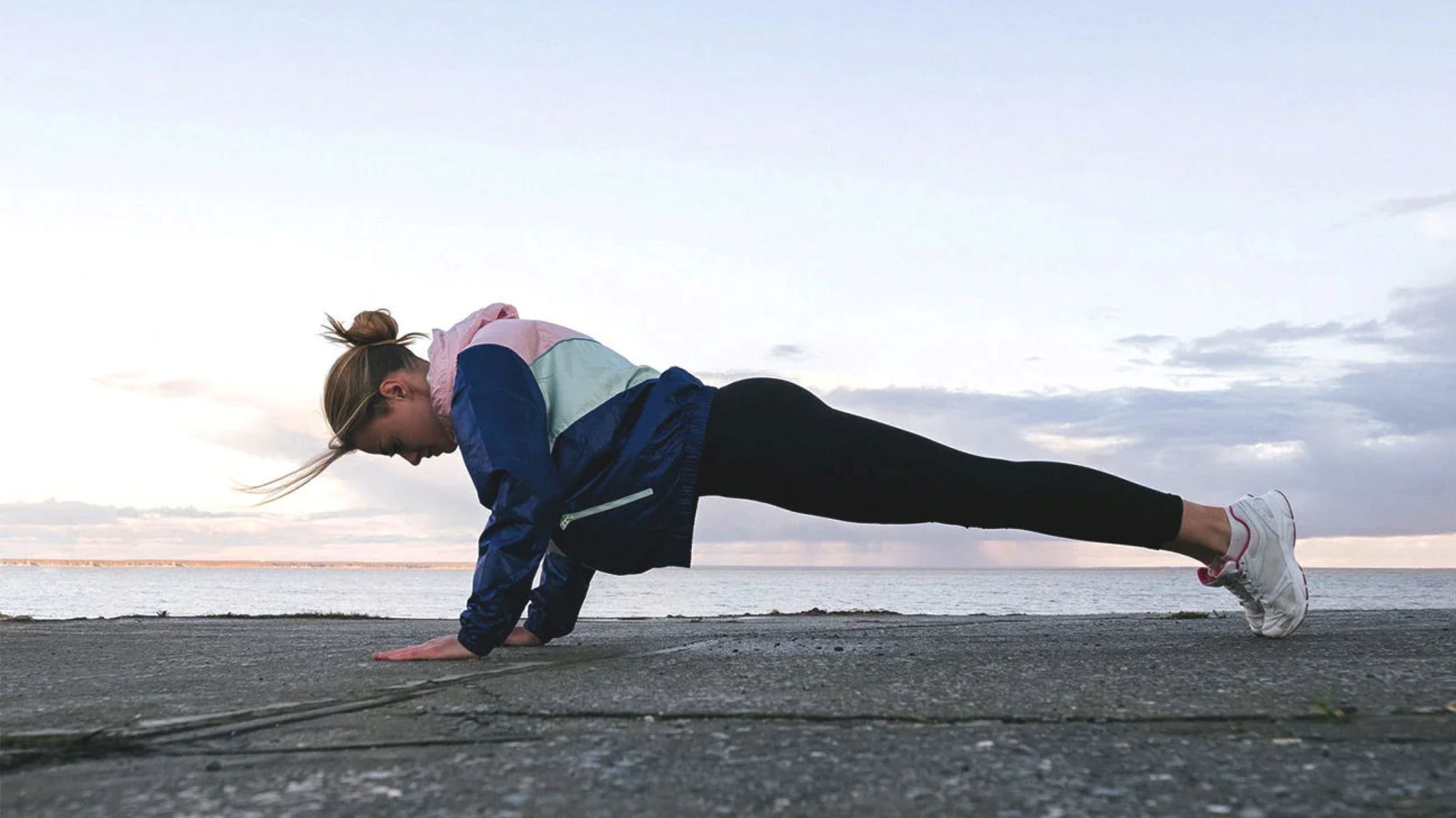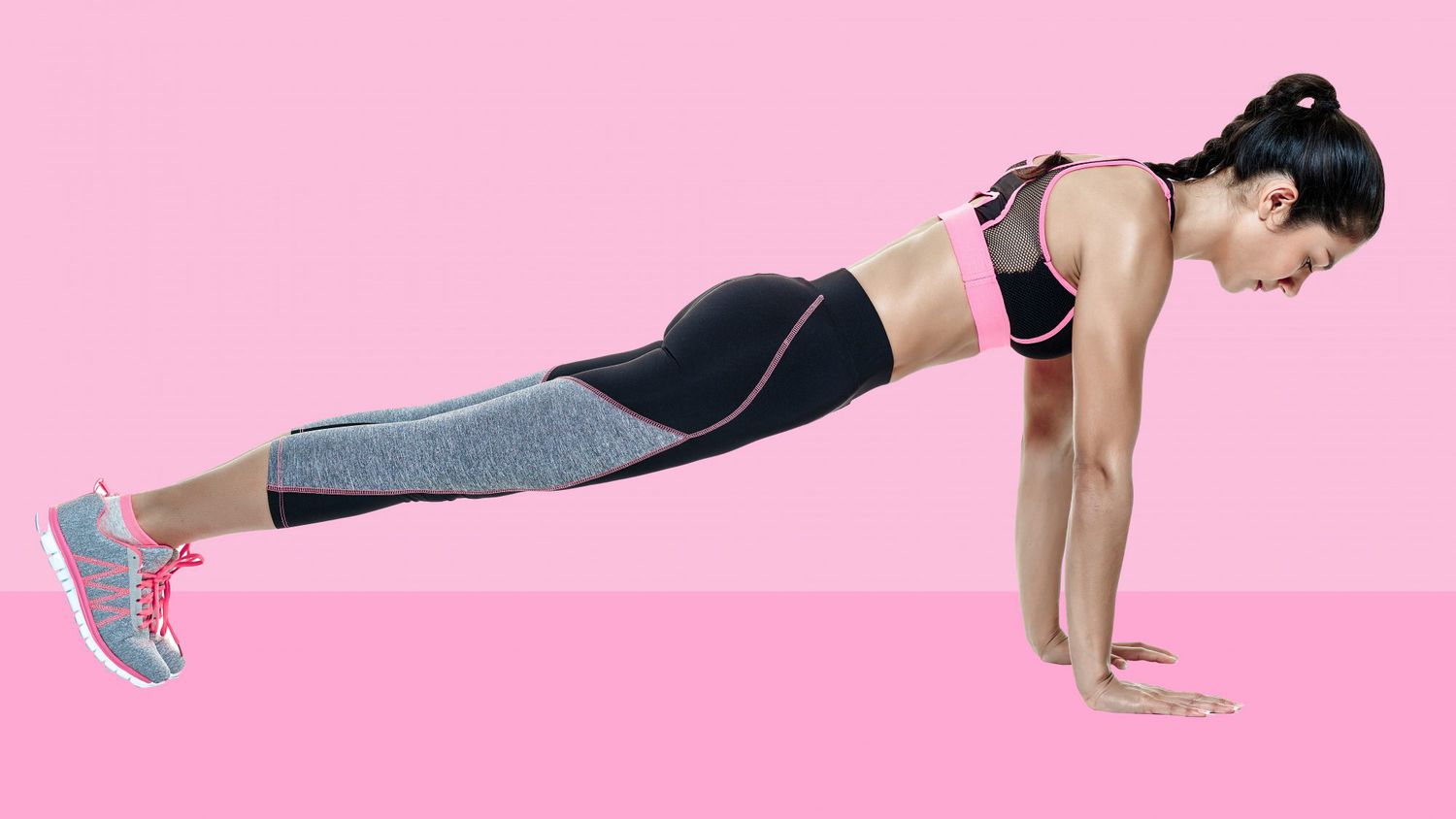

Featured
How Do You Do Planks Exercise
Modified: January 2, 2024
Featured: Discover the correct way to do planks exercise and maximize your results. Improve core strength and stability with this effective workout routine.
Introduction
Welcome to the world of planks, a simple yet highly effective exercise that can transform your core strength and overall fitness. Whether you’re a fitness enthusiast, an athlete, or just someone looking to improve their posture and stability, planks are an exercise you shouldn’t overlook.
Planks are a bodyweight exercise that primarily target the muscles in your core, including your abs, back, and hips. They involve holding a static position, similar to the push-up starting position, for an extended period of time. Despite their simplicity, planks are incredibly versatile and can be modified to suit any fitness level.
Why should you incorporate planks into your workout routine? Well, the benefits are numerous. First and foremost, planks engage multiple muscle groups simultaneously, making them a highly efficient exercise. In addition to strengthening your core, planks also improve your overall posture, enhance your balance and stability, and can even help alleviate back pain.
Beyond the physical benefits, planks also offer mental benefits. Holding a plank requires mental focus and determination, making it a great exercise for building mental toughness and discipline. It can also boost your confidence, as you witness your progress and improvements over time.
In this article, we will explore the proper form for doing planks, various plank variations you can try to keep your workouts fresh, common mistakes to avoid, and tips for getting the most out of your plank exercises. So, let’s get ready to dive into the world of planks and start building a stronger, more resilient core.
Benefits of Plank Exercise
The plank exercise offers a wide range of benefits that go beyond just developing a strong core. Let’s dive into some of the key advantages of incorporating planks into your fitness routine:
- Core strength: Planks primarily target the muscles in your core, including the rectus abdominis, transverse abdominis, and obliques. By consistently performing planks, you can develop a strong and stable core, which is essential for everyday activities and athletic performance.
- Improved posture: Weak abdominal muscles can lead to poor posture, resulting in back pain and discomfort. Planks train the muscles in your core to maintain proper alignment, helping you achieve a more upright posture and reducing the risk of developing chronic back issues.
- Enhanced balance and stability: Planks require you to engage your stabilizer muscles, including the muscles in your shoulders, hips, and legs. By consistently practicing planks, you can improve your balance and stability, making you more resilient in other activities and sports.
- Increased flexibility: While planks mainly focus on building strength, they also help improve flexibility, especially in the posterior muscle chain. Regularly holding the plank position can help lengthen and stretch the muscles in your shoulders, hamstrings, and arches of your feet, promoting better overall flexibility.
- Enhanced metabolism: Planks are a compound exercise that engage multiple muscle groups simultaneously. This leads to an increased metabolic rate, which aids in calorie burning and weight management. Incorporating planks into your workout routine can contribute to a more efficient metabolism.
- Improved mental focus: Holding a plank position requires concentration and mental focus to maintain proper form. By practicing planks regularly, you can enhance your mental resilience, discipline, and focus, which can be beneficial in other aspects of your life.
These are just a few of the many benefits that planks provide. Whether you’re looking to strengthen your core, improve your posture, or enhance your overall fitness, incorporating planks into your exercise routine can help you achieve your goals.
Proper Plank Form
Performing a plank with proper form is crucial to reap the full benefits of this exercise and avoid injury. Here’s a step-by-step guide on how to do a plank with proper form:
- Starting position: Begin by positioning yourself face-down on the floor. Place your forearms on the ground, making sure they are parallel to each other and aligned with your shoulders. Your elbows should be directly beneath your shoulders, forming a 90-degree angle. Extend your legs straight behind you, with your feet hip-width apart and toes pressed into the ground.
- Engaging your core: Actively squeeze your glutes and engage your core muscles. Imagine pulling your belly button toward your spine to create a strong and stable abdominal contraction.
- Maintaining a straight line: Your body should form a straight line from your head to your heels. Avoid sagging your hips or lifting your buttocks too high in the air. Engage your glutes and quads to keep your body in a neutral alignment.
- Length of hold: Initially, aim to hold the plank position for 20 to 30 seconds. As you build strength and improve your endurance, gradually increase the duration to up to one minute or more.
- Breathing: Breathe deeply and evenly throughout the exercise. Avoid holding your breath, as it can increase tension and limit your ability to maintain proper form.
- Modifications: If you find it challenging to maintain proper form on your toes, you can modify the exercise by dropping to your knees instead. Keep your body aligned and engage your core as you would in a full plank.
Remember, quality over quantity is key when it comes to planks. It’s better to hold a plank position with proper form for a shorter duration than to compromise your form for a longer period. Focus on engaging the right muscles and maintaining a solid alignment throughout the exercise.
By practicing planks with proper form, you not only maximize the effectiveness of the exercise but also reduce the risk of strain or injury. Take the time to master your plank form, and you’ll be on your way to building a strong and resilient core.
Variations of Plank Exercise
Planks are incredibly versatile, and there are several variations you can incorporate into your exercise routine to keep things interesting and challenge your muscles in different ways. Here are some popular variations of the plank exercise:
- Side Plank: Start in a traditional plank position, then shift your weight onto one forearm and rotate your body to the side. Stack your feet on top of each other or stagger them for added stability. Lift your free arm towards the ceiling, keeping your core engaged. Side planks target your obliques and can help improve lateral core strength.
- Plank with Leg Lift: Begin in a standard plank position, then lift one leg off the ground, squeezing your glute and keeping your hips level. Hold for a few seconds, then lower the leg and repeat on the other side. This variation adds an extra challenge to your core stability and engages the glutes and hamstrings.
- Plank Jacks: Start in a plank position. Instead of holding the static position, jump both feet out wide like you would in a jumping jack motion, then hop them back together. This dynamic movement increases the heart rate, engages the abdominal muscles, and adds a cardio element to your planks.
- Reverse Plank: Sit on the ground with your legs extended in front of you. Place your hands on the ground just behind your hips, with fingers pointing towards your feet. Press your hands into the ground and lift your hips upward until your body forms a straight line from head to heels. This variation targets your core, glutes, and shoulders.
- Elevated Plank: Place your forearms on an elevated surface, such as a bench or step, and extend your legs behind you. Keep your body aligned and core engaged. The added elevation increases the difficulty of the exercise and engages your shoulders and upper back more intensely.
These are just a few of the numerous plank variations you can experiment with. The key is to choose variations that target different muscle groups and challenge your body in various ways. Feel free to mix and match these variations or explore other plank variations to keep your workouts exciting and effective.
Remember to always prioritize proper form and listen to your body. If any variation causes discomfort or strain, modify or regress the exercise to a level that feels challenging yet manageable for you.
Common Mistakes to Avoid
While the plank exercise is relatively simple, certain mistakes can hinder your progress and increase the risk of injury. Here are some common mistakes to avoid when performing planks:
- Sagging or lifting the hips: It’s essential to maintain a straight line from your head to your heels throughout the entire plank. Avoid sagging your hips towards the ground or lifting them too high in the air. Engage your core and glutes to keep your body in a neutral alignment.
- Allowing the lower back to collapse: Allowing your lower back to sink or arch excessively can strain the lumbar spine. Focus on keeping your core engaged and your back flat. Imagine drawing your belly button towards your spine to maintain a stable and supported position.
- Placing your hands too far forward or backward: The position of your hands is crucial for maintaining proper form. Ensure that your hands are directly beneath your shoulders, forming a 90-degree angle with your elbows. Avoid placing your hands too far forward or backward, as this can compromise your alignment and place unnecessary strain on your shoulders and wrists.
- Not engaging the core: One common mistake is not fully engaging the core muscles during planks. The plank is primarily a core exercise, so make sure to squeeze your abdominals, engage your glutes, and maintain tension throughout your midsection. This will help you get the most out of the exercise and develop a strong core.
- Hold your breath: Holding your breath during a plank can create unnecessary tension and make it harder to maintain proper form. Focus on breathing deeply and evenly, inhaling through your nose and exhaling through your mouth. This will help you stay relaxed and maintain control throughout the exercise.
- Overextending the neck: Avoid straining your neck by keeping it in line with your spine. Keep your gaze focused on the floor a few inches in front of your hands. This position helps maintain proper alignment and prevents unnecessary strain on your neck muscles.
Avoiding these common mistakes will not only help you maximize the effectiveness of your planks but also reduce the risk of injury. Pay attention to your form, listen to your body, and make adjustments as needed to ensure that you’re performing planks safely and effectively.
Tips for Getting the Most out of Planks
To make the most out of your plank exercises, try incorporating these tips into your routine:
- Progress gradually: If you’re new to planks, start with shorter durations and gradually increase the time as you build strength and endurance. Push yourself to hold the plank just a little longer each time to challenge your muscles without sacrificing form.
- Focus on quality over quantity: Maintaining proper form is more important than the amount of time spent in the plank position. Keep your body aligned and engage your core throughout the exercise. If your form starts to break down, it’s better to take a break rather than continuing with faulty form.
- Incorporate plank variations: Keep your workouts interesting and engage different muscle groups by incorporating a variety of plank variations. Experiment with side planks, plank with leg lifts, or plank jacks to target different areas of your core and challenge your body in unique ways.
- Make it a part of your routine: Consistency is key when it comes to seeing results. Aim to include planks in your workout routine at least two to three times a week. As you progress, you can gradually increase the frequency and duration of your plank workouts.
- Combine planks with other exercises: Planks can be a great addition to a full-body workout routine. Consider incorporating planks into circuit training or combining them with other exercises such as push-ups, squats, or lunges for a more comprehensive workout.
- Engage your breath: Focus on maintaining a steady breathing pattern during your planks. Inhale deeply through your nose and exhale fully through your mouth. This will help you stay relaxed and in control, optimizing your performance and endurance.
- Track your progress: Keep a record of your plank times and progress over time. Seeing how far you’ve come can be motivating and encourage you to push yourself further. Use a timer or a fitness tracking app to monitor your plank durations and challenge yourself to beat your previous best.
Remember, everyone’s fitness level is different, so listen to your body and adjust the difficulty of your planks accordingly. It’s always better to challenge yourself within your capabilities rather than pushing too hard and risking injury.
By following these tips, you can enhance the effectiveness of your plank exercises and continue to progress toward your fitness goals. So, get ready to plank like a pro and enjoy the benefits of a strong and resilient core!
Conclusion
Planks are a simple yet powerful exercise that can have a significant impact on your overall fitness and core strength. By incorporating planks into your workout routine, you can strengthen your core muscles, improve your posture, enhance your balance and stability, and boost your overall fitness level.
Remember, proper form is crucial when performing planks. Maintain a straight line from your head to your heels, engage your core, and avoid common mistakes such as sagging hips or lifting your buttocks too high. Take the time to master your plank form and gradually increase the duration as your strength improves.
Don’t be afraid to explore different plank variations to keep your workouts fresh and challenge your muscles in new ways. Incorporating side planks, plank jacks, or elevated planks can add variety and target different muscle groups within your core.
Consistency is key when it comes to planks. Aim to include planks in your workout routine regularly, and track your progress to stay motivated and see how far you’ve come. Remember to listen to your body, adjust the difficulty level, and prioritize quality over quantity.
So, whether you’re a beginner or a seasoned fitness enthusiast, make planks a staple in your exercise routine. Commit to building a strong and resilient core, and reap the numerous benefits that planks have to offer.
Now it’s time to get down on the mat, engage your core, and feel the burn as you hold that plank position with determination and focus. Your journey to a stronger core starts now!
